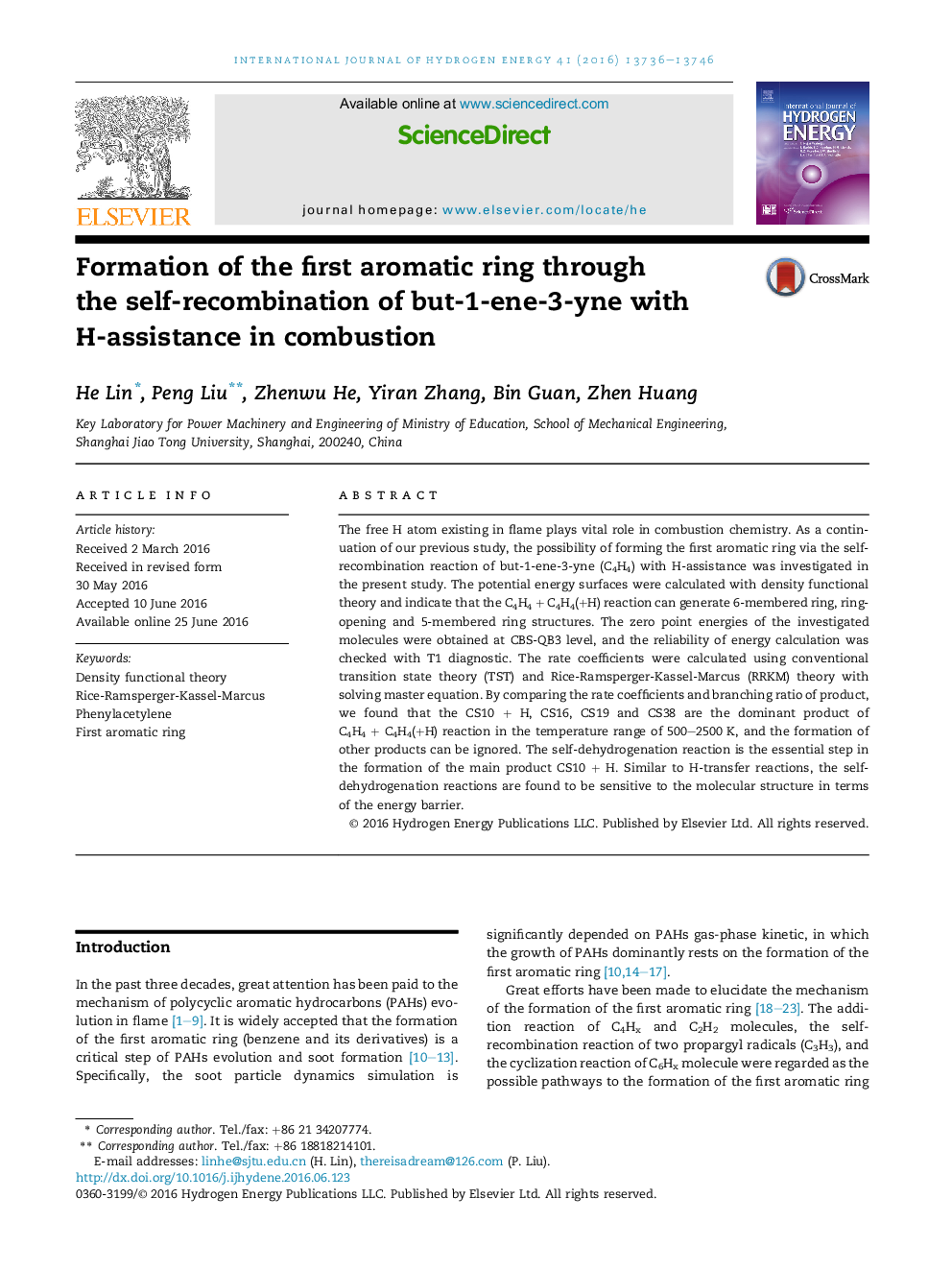| کد مقاله | کد نشریه | سال انتشار | مقاله انگلیسی | نسخه تمام متن |
|---|---|---|---|---|
| 1276488 | 1497394 | 2016 | 11 صفحه PDF | دانلود رایگان |
• Detailed mechanisms of C4H4 + C4H4 + H reaction were investigated.
• The first aromatic ring structure can be formed in the C4H4 + C4H4 + H reaction.
• Branching ratio of products were got by RRKM theory with solving master equation.
• Phenylacetylene is one of the main products.
• The energy barrier of H-elimination reaction is sensitive to molecular structure.
The free H atom existing in flame plays vital role in combustion chemistry. As a continuation of our previous study, the possibility of forming the first aromatic ring via the self-recombination reaction of but-1-ene-3-yne (C4H4) with H-assistance was investigated in the present study. The potential energy surfaces were calculated with density functional theory and indicate that the C4H4 + C4H4(+H) reaction can generate 6-membered ring, ring-opening and 5-membered ring structures. The zero point energies of the investigated molecules were obtained at CBS-QB3 level, and the reliability of energy calculation was checked with T1 diagnostic. The rate coefficients were calculated using conventional transition state theory (TST) and Rice-Ramsperger-Kassel-Marcus (RRKM) theory with solving master equation. By comparing the rate coefficients and branching ratio of product, we found that the CS10 + H, CS16, CS19 and CS38 are the dominant product of C4H4 + C4H4(+H) reaction in the temperature range of 500–2500 K, and the formation of other products can be ignored. The self-dehydrogenation reaction is the essential step in the formation of the main product CS10 + H. Similar to H-transfer reactions, the self-dehydrogenation reactions are found to be sensitive to the molecular structure in terms of the energy barrier.
Journal: International Journal of Hydrogen Energy - Volume 41, Issue 31, 17 August 2016, Pages 13736–13746
